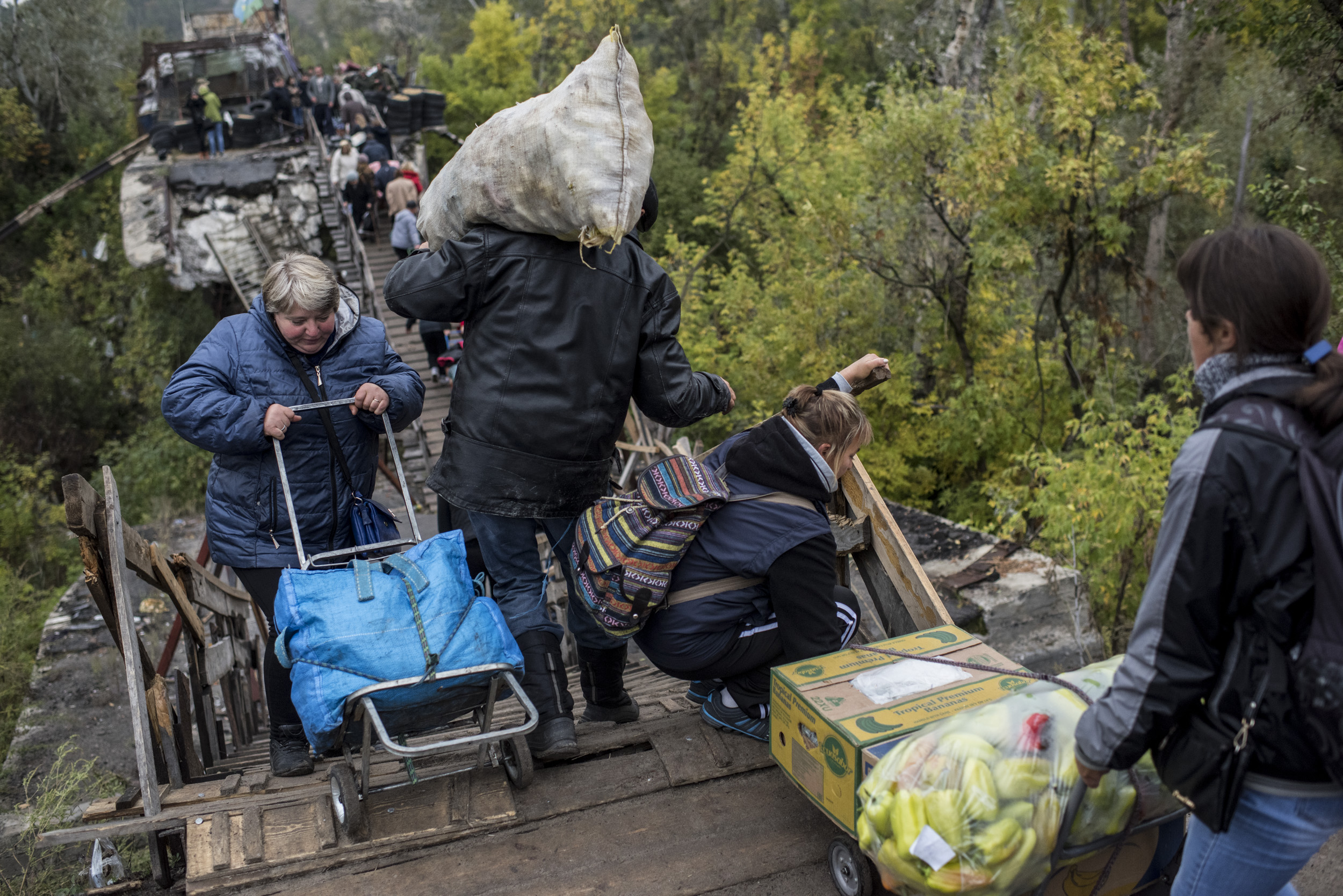Ukrainian forces are currently preparing for a bilateral pullout of manpower and weapons all along the 450-kilometer frontline in Donbas, according to Lieutenant General Volodymyr Kravchenko, the top military commander of the Ukrainian contingent deployed to the eastern war zone.
“Such a task has been set by the Chief of General Staff of the Armed Forces of Ukraine (Ruslan Khomchak), the Minister of Defense (Andriy Zahorodniuk) and the Head of State (President Volodymyr Zelensky),” the general said on Sept. 18 during a meeting with United Nations envoys.
“We are ready for this for the sake of making the lives of our citizens better.”
General Kravchenko, however, noted that a successful separation of combat forces on both sides of the frontline would depend on whether Russian-backed militants honor their own obligations and pull their forces off the lines.
In late September 2016, the Trilateral Contact Group in Minsk, consisting of envoys from Ukraine, Russia and the Organization for Security and Cooperation in Europe (OSCE), signed a framework agreement on the mutual withdrawal of troops in Donbas. The agreement envisaged creating three demilitarized zones in frontline areas in Luhansk Oblast, including those at the towns of Zolote, Petrivske, and Stanytsya Luhanska, an entry point to the Russian-occupied city of Luhansk.
A bilateral pullout of forces was supposed to start after a considerable period of stable ceasefire in the areas. Both of the warring parties were to withdraw at least 1 kilometer back and dismantle their fieldworks.
The partial demilitarization was believed to be a step toward reducing military tensions in the areas and relieving the misery of the local civilian population. A massive reconstruction of vital humanitarian infrastructure was to follow the withdrawal.
However, in the ensuing years, no progress was achieved.
The stalled process was effectively unblocked only in late June 2019, when the OSCE’s Special Monitoring Mission in Ukraine reported the complete and mutual pullout of Ukrainian and Russian-backed troops at the Stanytsya Luhanska entry point.

Local civilians cross a heavily damaged bridge at the entry point of Stanytsia Luhanska, which leads to the outskirts of the Russian-occupied city of Luhansk on Sept. 26, 2016. (OSCE/Evgeniy Maloletka)
However, that seeming breakthrough provoked a mixed reaction in Ukrainian society. Many deemed the Ukrainian withdrawal a military retreat and a surrender of the nation’s vital interests amid an ongoing war against Russian proxies.
Then, on Sept. 7, Ukraine and Russia conducted their first large-scale prisoner exchange. Soon after, President Zelensky announced a two-stage separation of combat forces in Donbas, describing it as “Zolote and Petrivske first, then an overall pullout, and then the end of the war.”
Speaking during the meeting with UN envoys, Ukraine’s top commander in Donbas, General Kravchenko, also noted that there had been positive changes in the humanitarian sector in the embattled region. In particular, preparations were underway to repair the dangerously damaged pedestrian bridge across the front line.
“A building site for equipment and materials has been prepared, and an access roadway has already been broadened and renewed,” he said. “An additional bus is planned to be launched soon, so that crossing the contact line could become even simpler and more comfortable.”
On Sept. 15, the Luhansk Oblast State Administration also launched a YouTube live broadcast showing repair works on the Ukrainian side of the Stanytsya Luhanska bridge.
